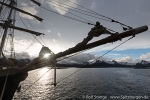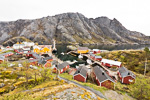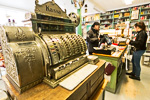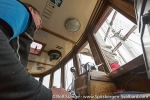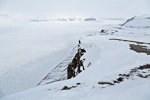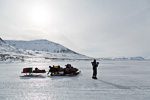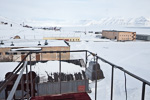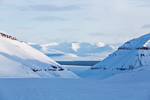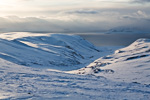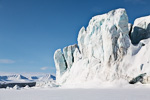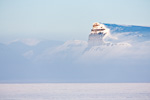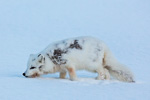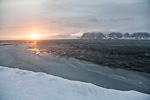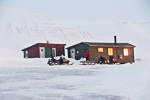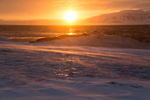-
current
recommendations- Liefdefjord
New page dedicated to one of Spitsbergen's most beautiful fjords. Background information and many photos.
- New Spitsbergen guidebook
The new edition of my Spitsbergen guidebook is out and available now!
- Liefdefjord
New page dedicated to one of Spitsbergen's most beautiful fjords. Background information and many photos.
Page Structure
-
Spitsbergen-News
- Select Month
- May 2025
- April 2025
- March 2025
- February 2025
- January 2025
- December 2024
- November 2024
- October 2024
- September 2024
- August 2024
- July 2024
- June 2024
- May 2024
- April 2024
- March 2024
- February 2024
- January 2024
- December 2023
- November 2023
- October 2023
- September 2023
- August 2023
- July 2023
- June 2023
- May 2023
- April 2023
- March 2023
- February 2023
- January 2023
- December 2022
- November 2022
- October 2022
- September 2022
- August 2022
- July 2022
- June 2022
- May 2022
- April 2022
- March 2022
- February 2022
- January 2022
- December 2021
- November 2021
- October 2021
- September 2021
- August 2021
- July 2021
- June 2021
- May 2021
- April 2021
- March 2021
- February 2021
- January 2021
- December 2020
- November 2020
- October 2020
- September 2020
- August 2020
- July 2020
- June 2020
- May 2020
- April 2020
- March 2020
- February 2020
- January 2020
- December 2019
- November 2019
- October 2019
- September 2019
- August 2019
- July 2019
- June 2019
- May 2019
- April 2019
- March 2019
- February 2019
- January 2019
- December 2018
- November 2018
- October 2018
- September 2018
- August 2018
- July 2018
- June 2018
- May 2018
- April 2018
- March 2018
- February 2018
- January 2018
- December 2017
- November 2017
- October 2017
- September 2017
- August 2017
- July 2017
- June 2017
- May 2017
- April 2017
- March 2017
- February 2017
- January 2017
- December 2016
- November 2016
- October 2016
- September 2016
- August 2016
- July 2016
- June 2016
- May 2016
- April 2016
- March 2016
- February 2016
- January 2016
- December 2015
- November 2015
- October 2015
- September 2015
- August 2015
- July 2015
- June 2015
- May 2015
- April 2015
- March 2015
- February 2015
- January 2015
- December 2014
- November 2014
- October 2014
- September 2014
- August 2014
- July 2014
- June 2014
- May 2014
- April 2014
- March 2014
- February 2014
- January 2014
- December 2013
- November 2013
- October 2013
- September 2013
- August 2013
- July 2013
- June 2013
- May 2013
- April 2013
- March 2013
- February 2013
- January 2013
- December 2012
- November 2012
- October 2012
- September 2012
- August 2012
- July 2012
- June 2012
- May 2012
- April 2012
- March 2012
- February 2012
- January 2012
- December 2011
- November 2011
- October 2011
- September 2011
- August 2011
- May 2011
- April 2011
- March 2011
- February 2011
- January 2011
- December 2010
- November 2010
- September 2010
- August 2010
- July 2010
- June 2010
- May 2010
- April 2010
- March 2010
- February 2010
- November 2009
- October 2009
- August 2009
- July 2009
- June 2009
- May 2009
- April 2009
- March 2009
- February 2009
- January 2009
- December 2008
- November 2008
- October 2008
- August 2008
- July 2008
- June 2008
- May 2008
- April 2008
- March 2008
- February 2008
- April 2000
- Select Month
-
weather information
-
Newsletter

| Guidebook: Spitsbergen-Svalbard |
Home →
Yearly Archives: 2015 − News & Stories
Winter season coming to an end; polar bear families in Billefjord
Inspite of thawing periods in April, the winter season has lasted for quite a long time. Now it is coming to an end. In late April, the weather had finally stabilized with temperatures below zero and many sunny days, bringing good touring weather beyond 17 May, the Norwegian national day.
The spring has brought new inhabitants to inner Isfjord: two polar bear families have been regularly seen in Billefjord and Tempelfjord, including one with 3 cubs, a great rarity. This very pleasant fact brought controversial discussions regarding snow mobile traffic in these frequently visited fjords. The Sysselmannen (local authorities) asked the public several times to execute good self control and keep traffic to an unavoidable minimum. Nevertheless, small groups were observed several times too close or too long near the bears.
Experience for example from Tempelfjord in 2013 shows that polar bears, including families with young offspring, do not necessarily suffer from frequent traffic. In that spring, a mother with 2 first year cubs spent several months in Tempelfjord, which was frequently visited by large numbers of groups. Respectful behaviour contributed to the well-being of the bear family, which was generally not visibly affected by traffic, but seemed to enjoy a good and healthy period, with regular hunting success.
Unfortunately, both cubs from 2013 are most likely dead by now. One died in Billefjord a short time after tranquilization for scientific reasons. There is now evidence for the tranquilization being the cause of the death, but the assumption is not far away.
The second one of those 2 cubs was most likely the one that was shot near Fredheim in late March 2015 by tourists in their camp. The bear had injured one person in a tent and was then injured with several bullets from a revolver. It was later shot by the police.
These observations indicate that a larger number of well-controlled tourists, with respectful behaviour, is less of a problem than a smaller number of visitors (including scientists) with more unusual activities, involving a higher risk. An interesting impression, as the public reception of tourists is generally much worse than that of scientists.
Currently, the greatest public concern is about the polar bear family with 3 cubs. Discussions in social networks make it clear that there is public concern and interest, at least locally, and there is little tolerance for behaviour that might disturb or even endanger the bears. On the other hand, the mother has already been marked by scientists, which involves tranquilization of at least the mother. It is not known in public wether the scientists used snow mobiles or helicopters to get within shooting range, but in any way this can safely be assumed to be a traumatic experience for the whole family, within a period that is believed to be so sensitive for the survival of the young bears that the Sysselmannen asks the public to minimize traffic in the same area.
Now, the snow mobile season is over anyway, which will make life for the polar bears a bit more quiet, as individual do not have the opportunity anymore to get too close to the bears.
Polar bear family in Billefjord, April 2015
Heimøya
Sat
23 May
2015
It is part of the fun to discover new places. If you haven’t been to a place, then it may be a good reason to go there one day. After an interesting afternoon – sometimes the wind needs about a minute up here to turn 180 degrees, which is interesting for a ship under sail – we came to Heimøya. A little island, separated from its little neighbouring island by a little channel. The Norwegians have obviously discovered Heimøya as a good place to build weekend houses, so there is quite a few of them there. Is that the reason for the name, or was it the other way around?
- gallery anchor link: #gallery_663
Click on thumbnail to open an enlarged version of the specific photo.
We still have a real sunset and, accordingly, a real evening with real evening light.
Nusfjord
Sat
23 May
2015
Nusfjord is the first port of call for us, so the rest of the night is calm, apart from the slightly disharmonic music of singing fenders. A very pleasant surprise for most on board to wake up on these lovely surroundings. Nusfjord is kind of a museum village, a time capsule that moves the visitor back to the early 20th century, as you are walking into the old „Landhandel“ or around the little natural harbour with its traditional rorbuer, simple wooden buildings where fishery workers were accommodated periodically in the old days. Kittiwakey are making the same noise today as they did 100 years ago. And the rain showers make you as wet as they did 100 years ago, Gore Tex or not.
- gallery anchor link: #gallery_662
Click on thumbnail to open an enlarged version of the specific photo.
As a final highlight, Captain Joachim is navigating Antigua around the little island of Brattholmen, through a scenic natural channel. A miniature version of Trollfjord, kind of a warm-up exercise. Perfectly enjoyed from the best place, up on the mast ☺
Bodø
Fri
22 May
2015
Yeeha – today I am starting my northern sailing season! The 3 mast barkentine Antigua is waiting in the harbour of Bodø in north Norway. She has taken 2 weeks to sail up here from Hamburg. I am covering the same distance a bit higher and faster.
A day later, the international group comes on board. Some language mathematics: German + Dutch = English.
- gallery anchor link: #gallery_660
Click on thumbnail to open an enlarged version of the specific photo.
A gentle southwesterly breeze is blowing, while we are leaving the harbour of Bodø, steaming into Vestfjord. 50 nautical miles of open water between here and Reine on Moskenesøya, one of the southern Lofoten islands. Soon, the sails are up. The sea is moderate, but enough for some on the first evening. Others enjoy sailing into the evening sun, while the famous Lofoten wall („Lofotveggen“) is slowly appearing out of a cloud.
Russia protests against Norwegian oil development in the Barents Sea
Russia is using every opportunity to challenge the Norwegian government in the Arctic. Already in early March, the Russian ambassador has filed a sharp diplomatic note to the Norwegian ministry of foreign affairs to protest against the opening of blocks for oil and gas in the Barents Sea.
According to the Russians, the area in question should be governed by the Spitsbergen Treaty, which would give other countries more rights to make use of potential resources. The further development would, at least, not be a domestic Norwegian issue anymore.
The Russian reasoning, however, leaves a mixed impression at best: it is argued that Spitsbergen has a shelf area on its own, to which the relevant area belongs. Hence, the area should be treated as part of Spitsbergen, according to the Russian government, and not as part of the Norwegian economic zone.
It is commonly accepted, as is illustrated in the image in this article, that there is one continuous shelf from mainland Norway up to Spitsbergen, and this shelf belongs to Norway. This is certainly the perspective of the Norwegian government, which is certainly shared by the Russian government when it comes to their own shelf areas north of Russia. There is no geological or juridical reason to define a separate “Spitsbergen Shelf”.
The continental shelf in the Barents Sea (light blue) is commonly considered one continuous shelf. The arrow marks the position of Bear Island (Bjørnøya).
Source: Alaska Dispatch News: Russia protests oil development in Svalbard zone
Store Norske bailout
The Norwegian coal mining company in Spitsbergen, Store Norske Spitsbergen Kulkompani (SNSK), has been in difficulties for a while (see December news: Coal mining not profitable: Store Norske cuts 100 jobs). The low world market prices for coal are the main reason. The SNSK has already cut a large number of jobs, which is reason for nervousness in a place as small as Longyearbyen, which may suffer strongly from a significant loss of jobs, both economically and socially.
Hence, a decision by the Norwegian government comes as a relief for many in Longyearbyen: As minister of economic affairs Monica Mæland announced during a press conference, SNSK will get a credit of 500 million Norwegian kroner (about 60 million Euro). The company had asked for 450 million NOK, less than it will actually get now.
Mæland made it clear that the credit does not come without some conditions: it is not to be taken as a guarantee for the long-term existence of coal mining in Spitsbergen. Future government politics in Svalbard, which set the framework for the development, are to be defined in a government policy statement (“Svalbardmelding”), which comes every 5-10 years. The next Svalbardmelding is currently under preparation in the ministry of justice. The current credit still needs approval from the Storting (Norwegian parliament). And the land property of the SNSK, which is an important local land owner, is to be transferred to the government. This shall strengthen Norwegian sovereignty and is likely to be more of a symbolic character, rather than having major practical consequences.
The credit for SNSK has led to common relief in Longyearbyen.
Coal mining in Spitsbergen: an industry with future or only with a lot of history?
Source: NRK
Pyramiden
Tue
28 Apr
2015
This year’s winter season will not be long anymore, Langøysund is already sailing again, the good, old day trip boat that will take tourists to Barentsburg and Pyramiden from now on throughout the summer. Well, Pyramiden is not yet accessible by boat, there is is still ice in inner Billefjord – and that’s how it should be. Hopefully it lasts for another while.
We have to make use of that. Once again enjoying the view from upper Nordenskiöldbreen across inner Billefjord to Pyramiden … a long trip, if done in one day, but we can’t afford a night in Pyramiden now, time-wise.
The ice in Tempelfjord has broken up at Fredheim, there is only a narrow rim of ice attached to the shore where it is actually still possible to pass, but we decide to opt for a steep slope down from a mountain deeper in the fjord, where the ice is safer. Noorderlicht is still there in the ice and will probably stay there for another couple of weekd, but for how long will it be possible to visit her?
The trip through scenic Bünsow Land is always a highlight, especially in weather like today. And then we have got it, this view from Nordenskiöldbreen, where you stand 500 m above the fjord, under Urmstonfjellet, to enjoy the view described above.
If you have been to Pyramiden last year, then you will know the local guide Sascha. He is back again this year, a pleasant meeting. And same for an equally pleasant, but much more surprising meeting with a friend from the sailing boat Antigua. Ismail is here now with another boat, the Bør, which is alongside at the ice edge, not too far from Pyramiden so they could walk here. So snow mobile expeditionists and sailors meet in one and the same place.
- gallery anchor link: #gallery_658
Click on thumbnail to open an enlarged version of the specific photo.
There are even more remarkable meetings on this beautiful day. As we have a rest on the ice on our way back to Nordenskiöldbreen, a polar bear family is walking not too far from us. The arctic cannot be more beautiful than this. They walk past us, and as they have left, we start again and continue our long trip back to Longyearbyen. This was the last winter trip for us for this year. It won’t be long anymore and then we will continue under sail.
East coast
Sun
26 Apr
2015
25th-26th April 2015 – I can repeat the text of the last blog entry here with just some minor adaptions without feeling bad about it. Sometimes it is so easy. Life does not have to be complicated up here, it does not have to be different every day. The arctic is beautiful. Enjoying it is the main point. That’s it.
Of course it is nevertheless nice to discover new places. Such as Moskusdalen on the eastern side of Sassendalen. Many drive past Moskusdalen on the way to the east coast, few bother to have a look. But it is a beautiful place. Not big and spectacular. Small, silent, beautiful. It has even got an old hut, another secondary hut built by the famous Hilmar Nøis, probably in the 1920s or 1930s.
And now, as promised, the slightly adapted repetition of the last blog’s text ☺
The scenic beauty of Sassendalen and Mohnbukta cannot be praised too often. The better if you have the opportunity to enjoy this arctic paradise not just for a few hours, but for some days. You don’t have to do a lot, the polar cinema is playing an endless film of sheer beauty. Just watch nature through the window of a cousy cabin for a while. You will constantly discover new details and be amazed by the changing light and atmosphere. Great midnight sunsets.
- gallery anchor link: #gallery_656
Click on thumbnail to open an enlarged version of the specific photo.
Russian Vice premier Rogozin in Spitsbergen
The sudden surfacing of the powerful Russian politician Dmitry Rogozin, vice premier and leader of the Russian government’s new Arctic Commission, stirred Norwegian officials up. Rogozin is on an EU sanction list and not welcome in Norway, as was subsequently made clear by the Norwegian government.
Rogozin provoked the Norwegian government by mentioning that the Norwegian sovereignty is limited in Svalbard (the Spitsbergen Treaty makes undisputably clear that Norway has full sovereignty over the Spitsbergen archipelago, but it does indeed put some limits to the execution of the sovereignty). According to Rogozin, nobody could be kept from visiting Svalbard.
It is not known how Rogozin, who made his arrival known via twitter, arrived at the airport at Longyearbyen, but it is safe to assume that he did not travel trough mainland Norway. Rogozin soon continued to the Russian drift ice station Barneo near the north pole, where he made further provocative comments in an interview to Russian state TV: “Last year, we had the historical reunification of Sevastopol and the Crimea. This year, we present a new view and new powerful stress on the development of the Arctic. Basically, its is all about the same …” and he continued: Russia is now “starting to get more conscious about territory, its interests and borders”. Russia is known as nationalist and expansionist.
Norway’s foreign minister Børge Brende did not leave any doubts that “people on the sanctions list, people that have been central in breaching international law in Ukraine, are not welcome to the mainland or to Svalbard”.
It is, however, unlikely that this will make of an impression on the Russian vice premier.
Russian vice premier Dmitriy Rogozin at the Russian drift ice station Barneo near the north pole (twitter photo)..
Source: Barentsobserver
Vindodden
Wed
22 Apr
2015
20th-22nd April 2015 – Vindodden – The scenic beauty of Sassenfjord and Tempelfjord – both are one continuous fjord system – cannot be praised too often. The better if you have the opportunity to enjoy this arctic paradise not just for a few hours, but for some days. You don’t have to do a lot, the polar cinema is playing an endless film of sheer beauty. Just watch nature through the window of a cousy cabin for a while. You will constantly discover new details and be amazed by the changing light and atmosphere. Sometimes a fox will visit the hut. Great midnight sunsets, the last ones of the spring. In a few days, there won’t be any sunsets anymore until late August.
- gallery anchor link: #gallery_654
Click on thumbnail to open an enlarged version of the specific photo.
Arctic voyages 2015: Jan Mayen, Spitsbergen
Two tickets have become available again on the expedition to Jan Mayen 2015 (15th-27th June) due to a cancellation. Demand is high, the Jan Mayen expedition in 2016 is already fully booked.
In June 2015 we are sailing to Jan Mayen …
There is also still the opportunity to join us on the voyage in Spitsbergen (15th-25th September) 2015 with SV Antigua, with focusses on glacier hikes and photography, next to the “more usual” landings and walk, which we will certainly also do. This voyage will be German speaking.
… and in September 2015 with SV Antigua to Spitsbergen’s glaciers.
Antarctic panorama: Cape Adare
There is a new panorama tour (virtual tour) from Antarctica, namely from Cape Adare in the Ross Sea. Cape Adare is one of the most famous, but rarely visited places in Antarctica: in 1895, it was the site of the first well-documented landing on the continent, and in 1899 it was the site of the very first wintering on the continent, by an expedition led by Karsten Borchgrevink. These stories are shortly summarized in the new panorama tour, and so is the visit of the northern party under Campbell during Robert F. Scott’s final expedition with Terra Nova.
The panorama tour documents the historic huts at Cape Adare and gives impressions of the amazing scenery of the place at the northernmost end of Victoria Land, being part of the famous Transantarctic Mountains. Cape Adare is also home to the largest colony of Adélie penguins in Antarctica, which means in the world.
In early February, I was lucky to spend a rare good weather day at Cape Adare. On this occasion, I shot the panoramas which are now assembled to this new panorama / virtual tour (click here to get to the tour). Enjoy a virtual trip to Cape Adare!
Virtual tour of Cape Adare, site of the first landing and wintering in Antarctica and home to the largest colony of Adélie penguins.
The arctic blog continued
The arctic blog is now continued! Since mid March, I am back in Spitsbergen and frequently out on tour. Camera, an open eye and eagerness to see and experience arctic scenery, wildlife and history are always with me, and this results in photo galleries and little stories from travels out in the arctic wilderness, published in my arctic blog, which will be continued for most of the year. A trip to Tempelfjord makes the beginning, followed by the event of the year in Spitsbergen, the solar eclipse. Enjoy some virtual high latitude traveling!
Click here for the overview of the blog.
The arctic blog is continued: photos and stories from travels in Spitsbergen, Jan Mayen and Greenland.
Almost doubling of snow mobile accidents
Emergency services and hospital have got a record-high number of missions and patients from snow mobile accidents this year. Until late March, the hospital had 38 patients in treatment with injuries related to accidents from snow mobile driving. In 2014, the equivalent number was 21. Injuries often include fractures.
The data base is not sufficient to analyze reasons, but this season’s instable weather may have contributed with bad visibility at times and icy surfaces.
The proportions of locals and tourists is also not known. Several serious accidents included local drivers, such as the young man who died in an avalanche in January and the extensive search and rescue mission on the east coast. In late March, a young man from Longyearbyen fell into a 6 m deep snow whole with his snow mobile and received heavy head injuries. He is still in hospital in Tromsø, not in a life-threatening condition anymore but he his being kept in an artificial coma.
The numbers of participants on organized tours have not reached the levels of the record years of 2007 and 2008 again, but the numbers of individual snow mobile rentals have increased, indicating a larger number of tourists individually in the field. Those who are out on individual trips with limited experienced and without local knowledge have to remember that they are traveling with a strong vehicle that can quickly reach high speed in terrain that has all the potential traps and dangerous that the winter arctic may have. Uneven terrain, windholes in the snow etc. can be difficult to see in bad weather or poor light conditions, which may quickly result in dangerous accidents.
Enjoyable evening on tour with snow mobiles. But the weather is not always as nice as here.
Source: Svalbardposten (14, 2015)
Larsbreen
Sun
12 Apr
2015
Larsbreen is close to Longyearbyen, kind of a city park in a wider sense, a popular area for skiing. As soon as you start to climb up, not far from Nybyen, you have the arctic silence all around you, as Larsbreen is a snow mobile free area.
As most glaciers, Larsbreen is also changing. The ascent is different than it used to be. We climbed up through the central meltwater channel, something that provided a very interesting landscape experience. A little canyon cut into the glacier, with various moraine deposits nicely visible in the glacier ice. A cross section within an active glacier, how often do you get that?
Higher up, the glacier is getting wider, and next to it, there is Trollsteinen, offering a lovely view over central Nordenskiöld Land. With a nicely developed Halo as a crown, kind of a rainbow, but based on ice crystals rather than water droplets.
- gallery anchor link: #gallery_652
Click on thumbnail to open an enlarged version of the specific photo.
Good downhill skiing, followed finally by a visit to Coal Miners’s Grill, the new feeding place in Nybyen. What else could you ask for from a good day in the Arctic ☺
News-Listing live generated at 2025/May/03 at 23:06:42 Uhr (GMT+1)

